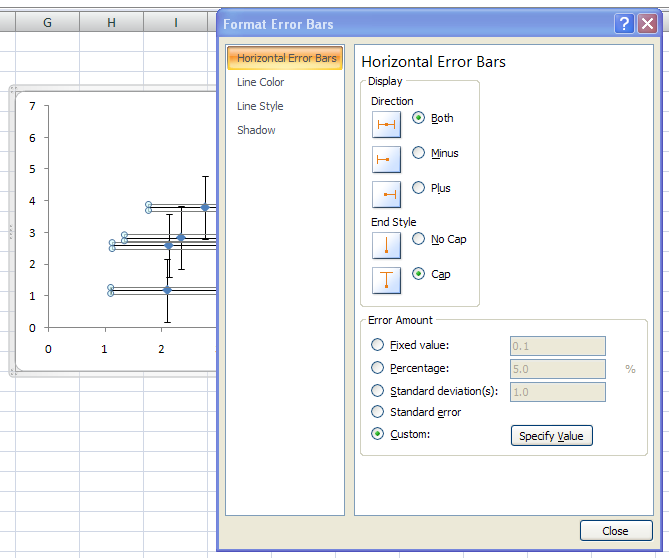

That means that, if you’re a budding data analyst trying to work out the variance from a set of numbers using either a sample of a data set or the entire data set, you’d want to use these functions. These are interchangeable for the time being, but could be removed from Excel in the future.įour of these functions ( VAR, VARP, VAR.S and VAR.P)focus on numerical data. Of these six, two functions ( VAR and VARP) are considered outdated, having been replaced with VAR.S and VAR.P. VARP, VAR.P or VARPA for population variance.VAR, VAR.S or VARA for sample variance, and.How do variance functions work in Excel?Īs we’ve already mentioned, there are six variance functions that you can use in Excel, split into two categories to deal with either population or sample variation. Variation is simply the standard deviation value squared, which gives you an idea of how far all of your numbers are spread from the average. Standard deviation calculates, on average, how far your values are from the mean.

If you’re thinking that this sounds a lot like standard deviation, that’s because it (almost) is. To work with text strings or logicals, use VARPA instead. As with the sample variance functions, VARP is the original, while VAR.P is the newer (and recommended) replacement, with both functions working only with numerical values. VAR and VAR.S only support numerical values, but if you want to use text strings or logical tests for a sample set, you’ll need to use VARA instead.įor population variance, you’ll need to use the VARP, VAR.P or VARPA functions. VAR is the original function, while VAR.S is the newer replacement, offering some speed enhancements over the original. For sample variance, you can use the VAR, VAR.S or VARA functions. To calculate these values, you can use one of six variance functions in Excel. In this context, population is the entire set of data, rather than a sample (or smaller subset) of it. As we’ve mentioned, there are two main forms of variance that you can calculate in Excel: population variance and sample variance.

You can calculate this spread (the variance) using Excel’s variance functions. By determining the variance, you can determine how well the group performed as a whole. If you have a set of exam results for a group of students, you might end up with wildly different values in two separate exams, but with the same average. Variance works by determining the spread of values against the mean. What are variance functions in Excel and what are they used for? How do variance functions work in Excel? To help you, let’s run through the basics.
How to calculate standard error in excel how to#
How to calculate variance in Excel: A step by-step guide.Things to consider before using variance functions in Excel.How do variance functions work in Microsoft Excel?.What are variance functions in Excel and what are they used for?.While there are similarities between these functions, there are some important things to consider before you use them. For population variance, you’ll need to use VARP, VAR.P, or VARPA instead.

If you’re working with a smaller sample, you’ll need to use VAR, VAR.S, or VARA functions to calculate variance. This is an important distinction, as the way Excel calculates variance will differ depending on the size of your data set. Excel allows you to calculate variance like this by using functions aimed at entire data sets (population variance) or a small subset of a larger group of data (sample variance). This has all kinds of uses for analysts, from determining the different ages in a group to working out the spread of returns in different investment portfolios. As this number grows, the variance grows with it. If the variance is zero, there isn’t any variety-all numbers are likely to be the same. In mathematical terms, variance is the calculation of how far a set of values is from the average value (the mean). We’ll explain how to use variance functions in this step-by-step tutorial. This is a great tool for data analysts, who can use Excel to calculate the variance using functions like VAR.S and VAR.P. Calculating variance allows you to determine the spread of numbers in a data set against the mean.


 0 kommentar(er)
0 kommentar(er)
